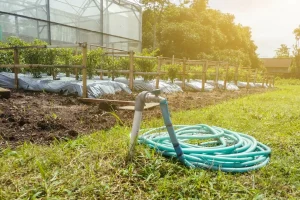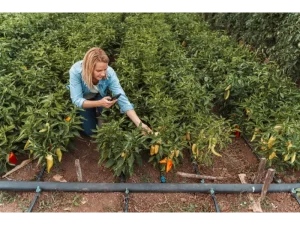The Netafim drip irrigation system enables the efficient use of water in modern agriculture. Furthermore, this system prevents waste by delivering water directly to plant roots. As a result, plants receive the moisture they need in a balanced manner. This improves product quality and increases productivity. In this way, water resources are conserved and sustainable agriculture is supported. Furthermore, the Netafim drip irrigation system can reduce energy consumption and lower costs. Therefore, it can be an effective solution in different climatic conditions. In this way, the soil structure is protected and the risk of erosion is reduced.This prevents salinity and preserves soil fertility. Drip irrigation integrates with fertilization, delivering nutrients evenly. Disease and pest risks decrease. Agricultural continuity is ensured and food security supported.
Table of Contents
- Netafim Drip Irrigation System
- Installation of Drip Irrigation Systems
- Above-Ground Drip Irrigation for Field Crops
- Below-Ground Drip Irrigation for Field Crops
- Conclusion
- Frequently Asked Questions
Netafim Drip Irrigation Systems
The Netafim irrigation systems enables the most efficient use of water in modern agriculture. Furthermore, this system prevents waste by delivering water directly to the root zone. As a result, plants receive the moisture they need in a balanced manner. This improves product quality and increases productivity. In this way, water resources are conserved and environmental sustainability is supported. Furthermore, the Netafim drip irrigation system can reduce energy consumption and lower production costs. Therefore, it can be an effective solution in different climatic conditions and for different product groups. In this way, the soil structure is preserved and the risk of erosion is reduced. This prevents salinity problems and protects soil health in the long term. Furthermore, the system can be integrated with fertilization processes to ensure nutrients reach the roots directly. This accelerates plant growth and reduces the risk of disease.
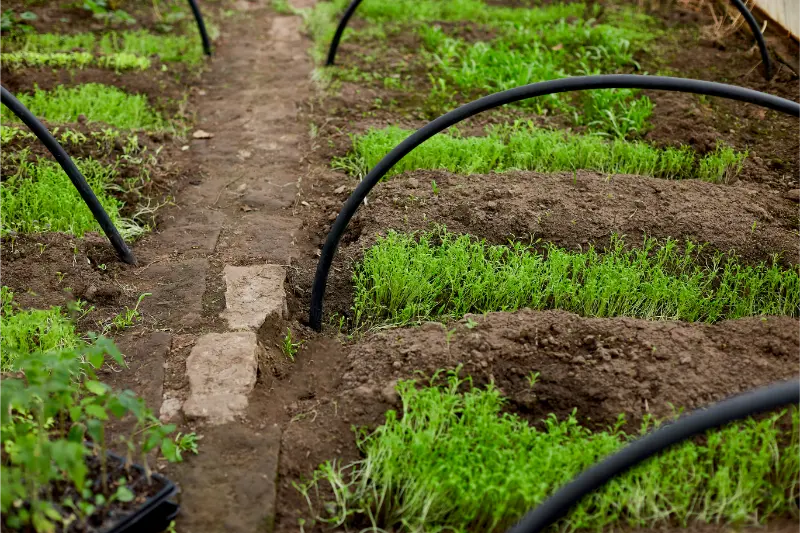
Installation of Drip Irrigation Systems
Drip irrigation systems can be installed with proper planning and professional implementation. Additionally, field topography, plant variety, and water source can be taken into account during the installation phase. Therefore, detailed analysis can be performed prior to the project to ensure the system operates efficiently. In this way, pipes are placed appropriately along plant rows, ensuring even distribution. This allows roots to receive balanced moisture and supports healthy growth. Furthermore, filter systems are always used during installation, preventing clogging. This reduces maintenance costs and enables long-term use.Drip irrigation becomes more effective with fertilizer integration. Water and nutrients reach roots directly, reducing losses. Automatic controls simplify system management.
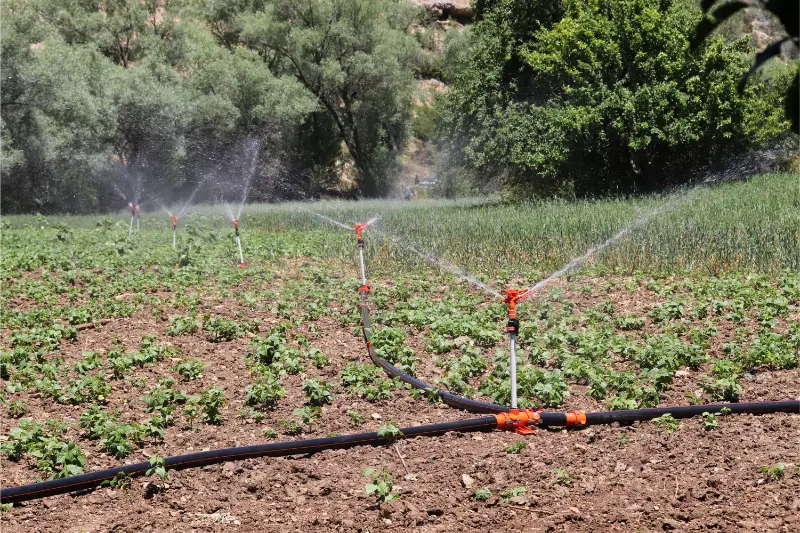
Above-Ground Drip Irrigation for Field Crops
Field crops can be irrigated with surface drip systems, which are easy to install. Pipes above ground allow quick maintenance. Installation costs are lower, roots get sufficient water, and quality improves. This ensures an even distribution of water and prevents waste. Furthermore, above-ground drip irrigation systems can easily adapt to different crop patterns. Therefore, they can be widely used in corn, cotton, vegetable, and fruit production. This allows the system to be easily controlled and production processes to be regulated. In this case, producers can gain advantages in terms of both cost and time. Furthermore, weed growth can be limited, thereby increasing agricultural productivity. For this reason, surface drip irrigation is a practical, economical, and functional method for field crops.
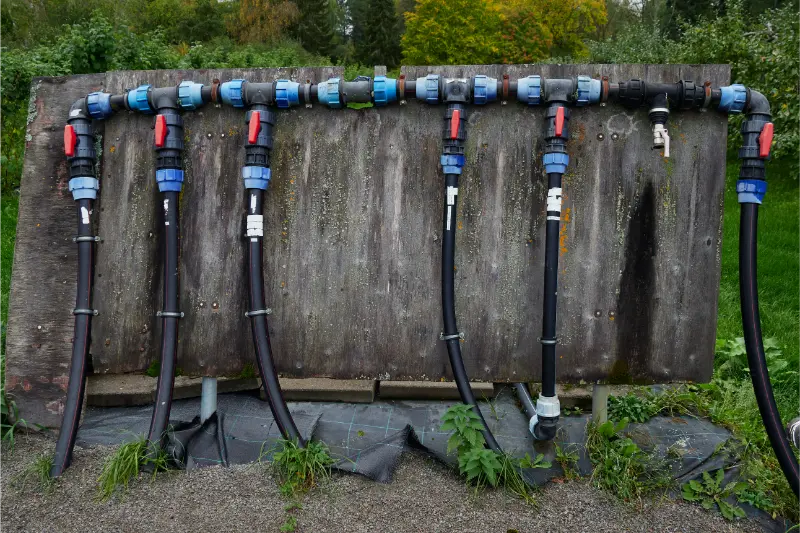
Below-Ground Drip Irrigation for Field Crops
Field crops can deliver water directly to the root zone using an underground drip irrigation system. This method also minimizes evaporation losses, thereby saving water. Consequently, it contributes to the more efficient use of resources. This limits weed growth on the surface and enables more productive cultivation. As a result, labor costs decrease and environmental impacts are minimized. Furthermore, subsurface drip irrigation for field crops can be installed with durable materials for long-term use. Therefore, it offers advantages in large-scale agricultural areas and regions where sensitive production is carried out. In this way, the roots of the crops can directly access water, and healthy growth can be supported. In this case, plant growth accelerates, and yield increases can be achieved. Furthermore, soil structure is preserved, and salinity issues are prevented. Therefore, the subsurface drip irrigation system for field crops is one of the most effective methods for sustainable agriculture.
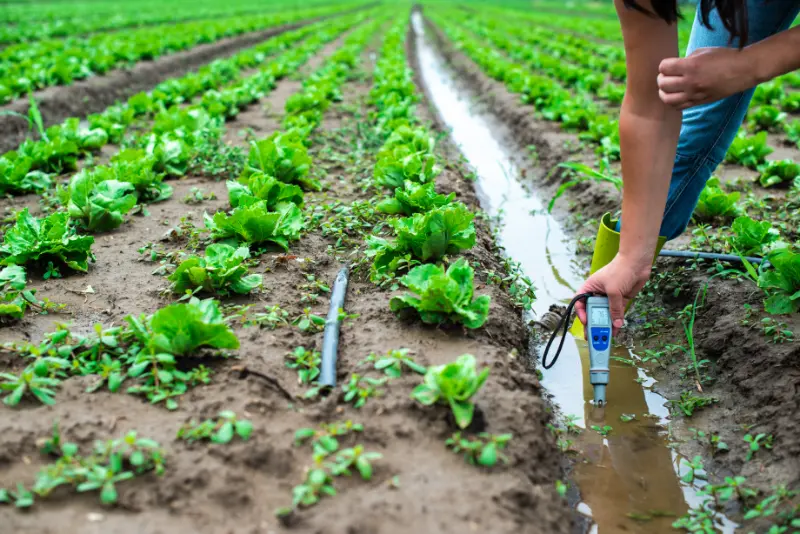
Conclusion
As a result, the Netafim Drip Irrigation System enables the most efficient use of water in modern agriculture. Furthermore, thanks to the Netafim Drip Irrigation System, plants can receive balanced moisture in their root zones and grow healthily. Therefore, the Netafim Drip Irrigation System increases productivity in agricultural production, improves product quality, and reduces costs. This way, reliable solutions can be offered for both small-scale gardens and large agricultural areas. In this case, water resources are protected, energy consumption is reduced, and sustainability is supported. Furthermore, weed growth is limited, disease risk is reduced, and soil structure is preserved. Therefore, drip irrigation technologies are of strategic importance in future agricultural practices. In this way, both food security is ensured and continuity in agricultural production is maintained.
Frequently Asked Questions
What advantages does the Netafim drip irrigation system offer? It saves water, provides water directly to plants, and increases productivity.
Where can the Netafim drip irrigation system be used? It can be widely used in greenhouses, fields, gardens, vineyards, and fruit production.
How are drip irrigation systems installed? After planning, pipes, filters, and drippers are placed appropriately.
What should be considered when installing drip irrigation? The water source must be clean, a filter must be used, and the correct pipe layout must be implemented.
Is above-ground drip irrigation advantageous for field crops? Yes, it is easy to install, quick to maintain, and a low-cost solution.
Which crops use above-ground drip irrigation for field crops? It is frequently preferred in cotton, corn, vegetable, and fruit cultivation.
What does subsurface drip irrigation provide for field crops? It reduces evaporation losses, prevents weed growth, and increases water efficiency.
Which crops is subsurface drip irrigation suitable for? It can be used for grains, forage crops, and field crops that are planted for long periods.
How do drip irrigation systems benefit the environment? They prevent water waste, reduce salinity risks, and support sustainable agriculture.
Can drip irrigation be used with automation? Yes, it can be integrated with automatic control systems for more efficient management.





